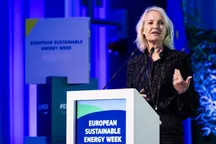Clean hydrogen is recognised as an energy carrier that will play a major role in the decarbonisation of European energy systems, as it can substitute fossil fuels in hard-to-abate sectors. Several governments and institutions have announced ambitious plans for developing a hydrogen economy. The European Union has notably set a 2030 target of 40 GW of electrolysers producing 10 million tonnes of renewable hydrogen to be added to 10 million tonnes of imported clean hydrogen.
These substantial quantities of hydrogen will require aboveground and underground storage capacities. Notably, underground hydrogen storage will provide a means for fulfilling these large-scale storage needs as it presents advantages in terms of environmental protection, energy security, safety, and economically, in terms of CAPEX (for high storage capacity) and OPEX. Underground storage CAPEX is highly dependent on targeted capacities, operating envelopes (namely required flowrates), available geology, needs for purification, and on storage technologies. However, an estimation of the orders of magnitude for costs is as follows:
- According to the Clean Hydrogen Partnership project HYSTORIES[1] (2022), storage solutions based on porous reservoirs have an estimated cost of about 20EUR/kg (+/- 50%) and are only valid for very large quantities, whilst SRIA KPIs (2022) present a target value







